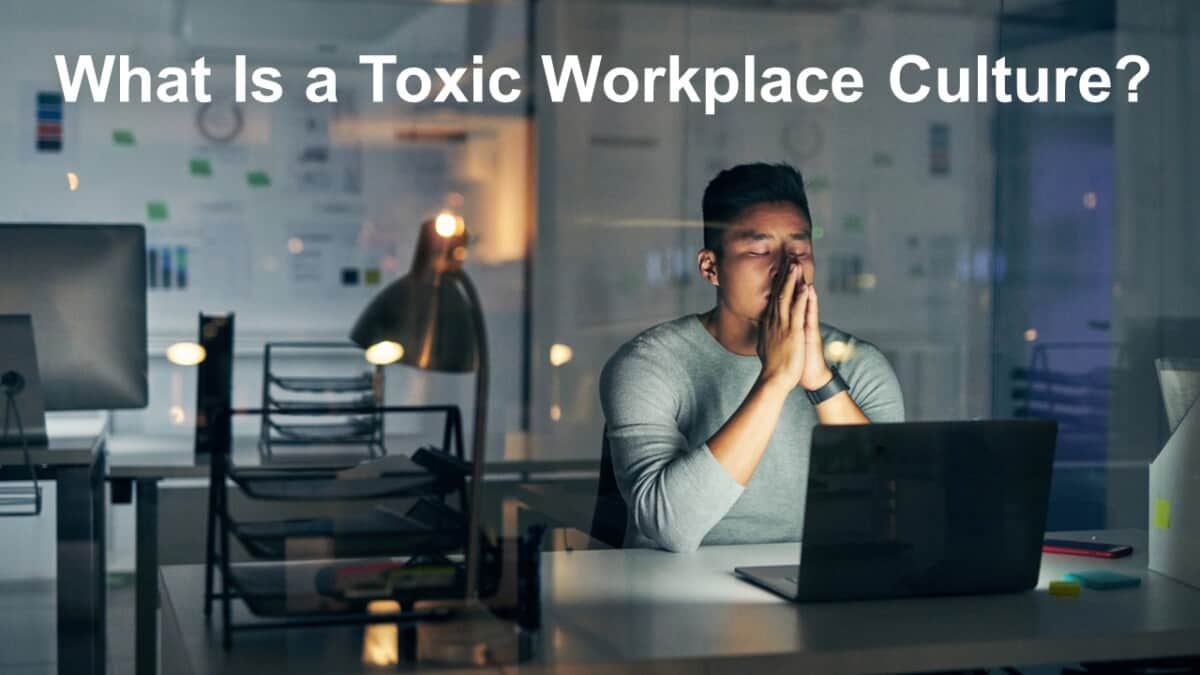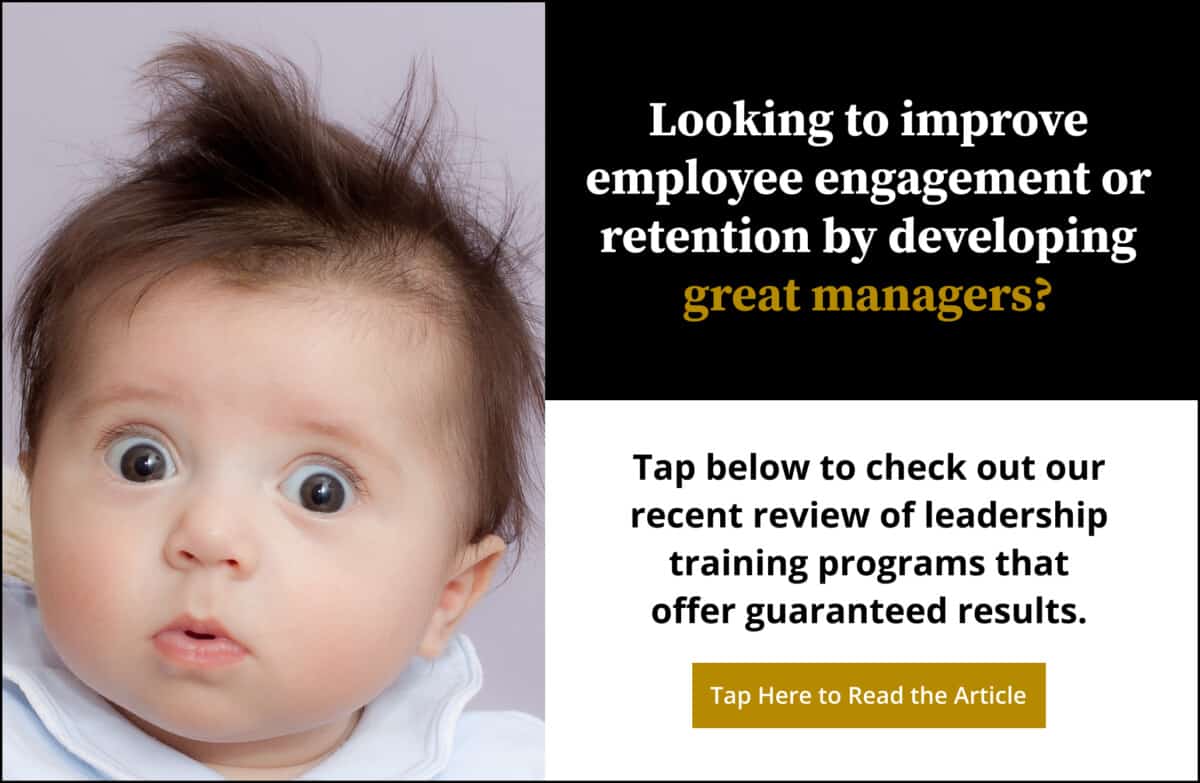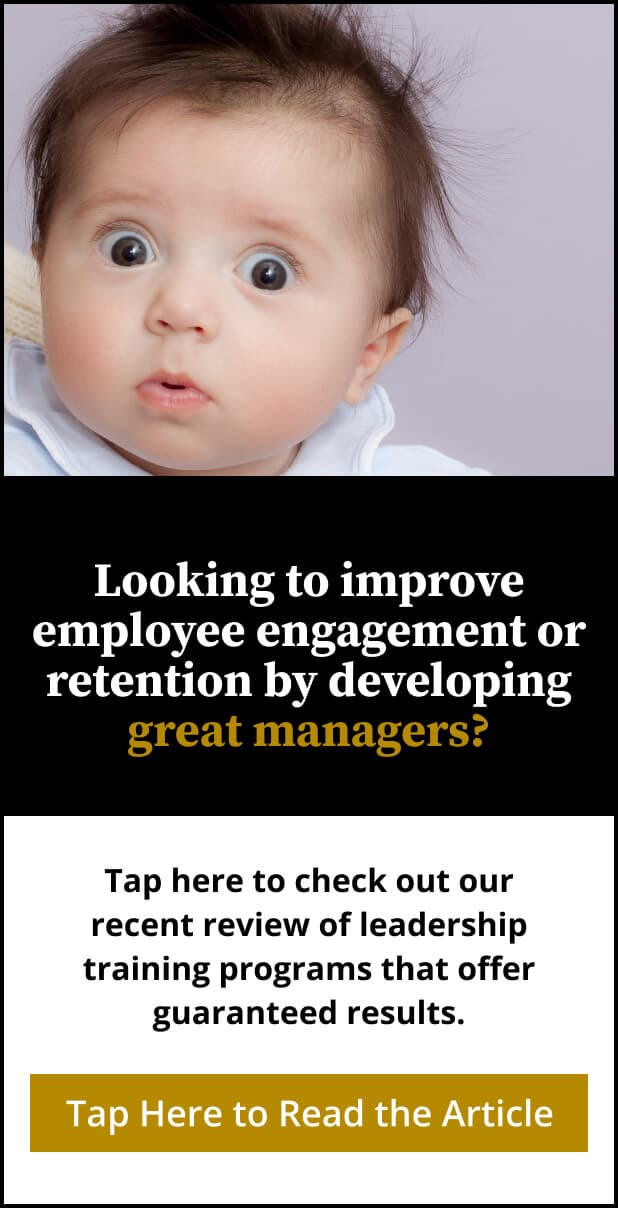Share:

Good leaders know that their most important role is to commit to the success of their employees so they are motivated and have the tools they need to do exceptional work.
Leaders help their teams consistently do great work by maintaining a positive, inclusive work environment and positively shaping the employee experience. The key to doing this is building a great culture that supports a positive work environment and not letting toxic behaviors get a foothold.
In a recent article, Business Leadership Today contributors Mark S. Babbitt and S. Chris Edmonds explained the important role leaders play in guiding culture so that it continues to support a positive work environment: “Leaders build culture based on the productive, positive behaviors they reward. Leaders tear down culture based on the destructive, demeaning behaviors they tolerate.”
Great cultures support healthy work environments, and great leaders are focused on maintaining working conditions that help employees do great work that benefits the organization without being detrimental to their well-being.
But when toxic behaviors creep into the workplace and leadership tolerates them, rather than dealing with them swiftly, it can turn cultures toxic and drive good employees away.
A toxic culture is a culture in which conflict is common and the work environment is negative because of unethical behaviors, a lack of inclusion, and disrespect. Antagonistic, potentially abusive, working relationships develop and cause good employees to disengage from their work and even leave the organization.
This article will explore the impacts of toxic workplace cultures and how we can build positive cultures that are inhospitable to toxic behaviors.


Toxic Workplace Culture Explained
A workplace with a toxic culture is an environment where harassment, microaggressions, unequal treatment of employees, or bad behavior from senior management or other staff is common and unresolved. This leads to employees feeling disrespected.
MIT Sloan analyzed the average culture score for companies in the Culture 500, a sample of large organizations that are mostly based in the US. They identified five attributes that have the largest negative impact on how employees rate their organization’s culture in Glassdoor reviews. The five attributes are disrespectful, noninclusive, unethical, cutthroat, and abusive.
Disrespectful
When this attribute is present in a culture there is a lack of consideration, courtesy, or dignity toward others. According to MIT’s findings, it has the largest negative impact on an employee’s overall rating of their culture of any other attribute.
Noninclusive
Noninclusive refers to a lack of representation or fair treatment of diverse groups. MIT found it to be the most powerful predictor of whether employees view their organization’s culture as toxic.
Unethical
This refers to unethical behaviors, dishonesty, or little to no regulatory compliance.
Cutthroat
While uncooperative teammates can hurt collaborative efforts, it’s a common issue with teams and does not necessarily indicate a culture is toxic. However, when employees’ colleagues actively undermine their work, they are more likely to view their workplace culture negatively or consider it toxic.
Abusive
This attribute includes bullying, harassment, and other hostile behaviors.
How Toxic Workplace Culture Hurts Organizations
Due to the inhospitable environment and disrespectful behaviors that result from them, toxic workplace cultures can hurt engagement, retention, productivity, and performance, all of which can affect profits.
Toxic workplace culture was the single best predictor of attrition during the first six months of the Great Resignation and was 10 times more powerful in predicting employee turnover than compensation. It is estimated that the employee turnover caused by a toxic workplace culture cost US employers nearly $50 billion per year before the start of the Great Resignation.
Toxic employees can submarine their co-workers, sabotage projects, hinder teamwork, drive top performers away, and poison culture. But it doesn’t just affect their work lives.
Toxic behaviors contribute to high stress, burnout, mental health issues, and even physical illness for employees. The odds of an employee who regularly deals with toxic culture-related injustice in the workplace suffering a major disease (coronary disease, asthma, diabetes, and arthritis) increases by 35% to 55% in a toxic work environment.
How to Avoid Toxic Workplace Cultures
Maintaining a positive work environment that is conducive to collaboration is crucial for team success and for preventing cultures from turning toxic.
Leaders ensure organizational culture stays true to a company’s mission, vision, and values by addressing toxic situations as soon as they arise so they don’t impact morale or cause irreparable damage to the positive culture leaders and their teams have worked to create.
Confronting and addressing issues effectively keeps working environments harmonious and helps leaders build trust with team members, so don’t shy away from dealing with conflict when it arises.
I recently sat down with Lisa Baker, founder of Ascentim LLC, to discuss why confrontation shouldn’t be considered negative and how it is sometimes necessary duty for a leader to carry out their other responsibilities:

But it’s not just about addressing issues created by toxic behaviors. There are things we can do to proactively reduce the likelihood that toxic behaviors will occur. Here are a few tips for keeping your organization’s culture positive and inhospitable to toxic behaviors:
Model Core Values
Since organizational culture is embedded in unspoken behaviors, mindsets, and social patterns, it is important to guide employees toward the behaviors, mindsets, and social patterns that you want to see more of in your organization through modeling core values.
When senior leadership demonstrates dedication to core values by modeling behaviors that align with these values, it guides employees toward similar behaviors and discourages employees from engaging in toxic behaviors.
That dedication should be strong and observable by employees daily—whether in meetings, emails, or one-to-one coaching sessions, which can be particularly helpful for employees.
Maintain Good Communication
Having a good system of transparent communication and an open-door policy where team members feel comfortable communicating with management helps to build a strong sense of trust with team members.
Toxic situations can escalate quickly in an organization when communication is poor and there is a lack of trust. Having high levels of trust between team members and leadership keeps everyone working together efficiently and harmoniously. It helps leaders identify and deal with toxic behaviors before they create problems on a team, but it also deters employees from engaging in toxic behaviors in the first place.
For communication to be the most effective, it should be honest and respectful, mutually beneficial, and emphasize active listening, which is the most important component of an effective and efficient system of communication.
Exchange Feedback
The exchange of constructive feedback on a regular basis is essential for helping employees course correct when needed and can also help leaders identify and address potentially toxic situations before they escalate.
The goal of this feedback is to help employees to do their best work, do it well, and better serve their co-workers. When done correctly, it should also boost employees’ level of job satisfaction and overall well-being because it gives them a voice and an outlet when there are any issues that could be causing conflict.
But, to be most effective, feedback needs to be a two-way street, with leadership being open to feedback from employees so that they can also course correct and build confidence. This gives employees a voice and helps them to build trust in leadership, which can prevent toxic situations from occurring.


Clarifying Expectations
According to the Partners In Leadership Workplace Accountability Study, 85% of the professionals surveyed aren’t clear on their organization’s expected results.
When employees are unsure about what is expected of them in their roles, what goals they should be setting, or any guidance as to how to achieve those goals, they could experience conflict on a daily basis about their duties and responsibilities that can spill over into their interactions with co-workers and create toxic situations.
Clearly communicating expectations, through regular one-to-one conversations, for example, can be a great way to clarify job duties and expectations and can keep employees motivated to work together and goal-focused.
Encourage Accountability
When employees don’t take accountability for their work, a team’s performance suffers. And you can’t expect employees to take accountability for results if they don’t have a clear set of expectations to guide them.
Leaders who provide clarity on expected results and feedback on how to achieve those results, help their team members take ownership of their roles, which motivates them to perform better. It also helps teams avoid playing the blame game when mistakes are made. “Blame culture” can take root in toxic work environments and hurt morale.
When leaders provide this clarity through frequent feedback, they are demonstrating their own accountability for expectation-setting and inspiring their employees to hold themselves accountable for meeting expectations.
The Bigger Picture: Toxic-Proof, Culture-First, Inclusion-Focused Leadership
The best way to prevent toxic culture from invading your organization, is making sure you are doing your part as a leader to keep your culture positive and make it work for everyone.
Too often, the focus of management is results. While we want our businesses to achieve positive outcomes, we jeopardize our chances of sustainable success when we let the pursuit of short-term results negatively impact our cultures in the long term.
In their book Good Comes First: How Today’s Leaders Create an Uncompromising Company Culture That Doesn’t Suck Babbitt and Edmonds make the case for a culture-first approach to leadership that equally values respect and results.
As Babbitt and Edmonds say, “Before we can begin working toward a culture where every human being experiences purposeful, fulfilling interactions—where they are respected and validated for their ideas, efforts, and contributions, daily—we must focus first on company culture.”
Leaders who take this approach see a significant impact for their efforts:
- Employee retention and referrals improve by 25% to 40%.
- Employee engagement increases by 40% or more.
- Customer service ratings and retention levels grow by 40% or more.
- Results and profits increase by 35% or more.
To achieve the positive business outcomes we want, we cannot focus on results at the expense of culture. Leaders are better able to achieve the business outcomes they want (and do so more sustainably) when they make culture a priority and foster a positive employee experience for all team members by ensuring they are providing an inclusive work environment where toxic behaviors are not tolerated.
Inclusion can be defined as the extent to which employees feel accepted, respected, and valued. It can also help gauge the extent to which employees feel encouraged to fully participate in the organization.
Leaders ensure their organization’s culture stays positive by supporting an inclusive work environment in which employees feel appreciated for their unique traits and skills and comfortable showing up every day as their authentic selves.
Employees who feel a sense of belonging in the organization will experience more alignment between their values and the organization’s core values.
In addition to the many ways inclusion can benefit innovation, creativity, employee engagement, and employee retention, it can also help an organization recruit talented employees.
Inclusion has become an extremely important issue for many workers just entering the workforce. According to a recent article in Big Think, an organization’s commitment to inclusion and diversity is important to 83% of Gen Z job seekers.
Companies that espouse a commitment to inclusion (through words and actions) are demonstrating to potential future employees that they are welcome before they even join the organization.
Leaders who want to support an inclusive environment should make it a habit to regularly re-evaluate seemingly innocuous practices embedded in a company’s culture that could potentially make employees feel less welcome and negatively impact employees’ perception of the culture.
The key is to be mindful of how the culture impacts employees, aware of aspects of it that may need to change, and intentional about how it evolves over time.

Matt Tenney has been working to help organizations develop leaders who improve employee engagement and performance since 2012. He is the author of three leadership books, including the groundbreaking, highly acclaimed book Inspire Greatness: How to Motivate Employees with a Simple, Repeatable, Scalable Process.
Matt’s ideas have been featured in major media outlets and his clients include numerous national associations and Fortune 500 companies.
He is often invited to deliver keynote speeches at conferences and leadership meetings, and is known for delivering valuable, actionable insights in a way that is memorable and deeply inspiring.


